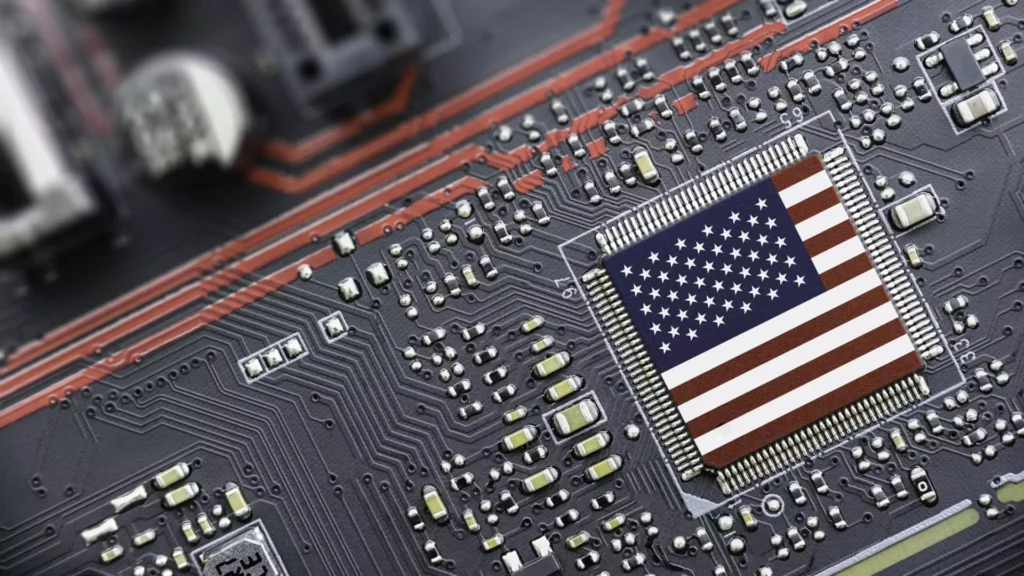The recent announcement by the U.S. Commerce Department of an investigation into semiconductor imports is a defining moment for the nation—one that puts a spotlight on several interconnected issues: economic strength, technological supremacy, and national security. In a world increasingly defined by the prowess of digital technology, semiconductors are the unsung heroes that drive nearly every modern device and system from smartphones to military-grade weaponry. However, this investigation is not just a regulatory formality; it embodies a critical recognition by the U.S. that its dependence on foreign semiconductor manufacturers poses a significant risk.
The stakes are high. Nations like Taiwan and South Korea are not just competitors in the international market; in this specific context, they are strategic players whose supply chains could be capitalized upon by potential adversaries. The U.S. cannot afford to overlook the interdependencies that exist within the global technology supply chain, especially given how swiftly geopolitical dynamics can change. As such, this initiative expresses a tremendous opportunity to reevaluate and recalibrate America’s place in this pivotal sector.
The Duality of Policy Responses
President Trump’s approach to trade has often been characterized as contradictory; on the one hand, he seeks to promote American manufacturing and bolster domestic industries, and on the other, his use of tariffs often complicates those very intentions. The initial exemption for semiconductor products from tariffs was initially seen as a protective measure, but comments suggesting that these unique commodities may soon face tariffs have raised eyebrows. This represents a troubling trend that could inadvertently stifle innovation and growth in a sector that requires free-flowing capital and cross-border cooperation.
Tariffs may seem like a simple solution to safeguard national interests, yet they carry hidden costs. For instance, increased prices for semiconductors would funnel downwards to consumers, driving up the cost of everyday technology. The U.S. must strike a balance—protecting its national interests while ensuring that its policies promote innovation and not stifle it.
Reinforcing Domestic Capacity
Among the most eye-catching aspects of the investigation is its emphasis on bolstering domestic semiconductor manufacturing. The $280 billion allocation from the CHIPS and Science Act is a historic measure aimed at revivifying industry capabilities that have long been outsourced. This move signifies not merely a reaction to external pressures but a proactive strategy aimed at securing American jobs and technological leadership for the future.
One must recognize that establishing a robust manufacturing base is not just about numbers; it’s about creating jobs that are future-oriented and sustainable. With rapid advancements in AI, an industry overhaul that emphasizes semiconductor production can yield benefits that extend far beyond merely meeting current demand; it can lay the groundwork for American leadership in next-generation technologies.
Public Involvement and Industry Responses
In an intriguing twist, the Commerce Department has opened the investigation to public comments, encouraging industry stakeholders and citizens to contribute their perspectives. This inclusive approach fosters a sense of collaboration that allows for a broader understanding of the complex dynamics within the semiconductor sector. Unlike the imposition of tariffs, this democratic consultation invites valuable insights from various quarters, enabling informed, well-rounded policy decisions.
Already, companies like Nvidia are showing adaptability—planning factories within the U.S. to manufacture AI supercomputers. Such initiatives not only align corporate objectives with national interests, but they also serve to underscore a critical pivot in the technology landscape: collaboration between American companies and international partners is vital for a thriving semiconductor ecosystem.
Cautious Optimism Amid Challenges
Nonetheless, there are formidable challenges ahead. The socio-economic ramifications of potential tariffs must be examined critically, as rising costs could affect both businesses and consumers. The U.S. needs to be judicious as it navigates the nuanced terrain of international trade relationships while ensuring its own economic interests aren’t compromised.
As policymakers strategize the next steps based on findings from the Commerce Department investigation, they need to cultivate a mindset that emphasizes resilience. Anticipating possible disruptions in foreign supply chains will be essential, as economic fragility could have dire consequences in a hostile global environment.
Looking ahead, America stands at a crucial inflection point. The course it charts in the semiconductor sector may well define its economic landscape and broader geopolitical standing. Facilitating a self-sufficient semiconductor supply chain is no mere bureaucratic exercise; it represents a triumphant assertion of American innovation and resolve in a fiercely competitive world.









Leave a Reply